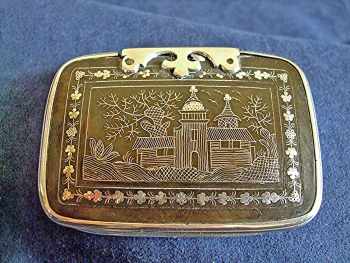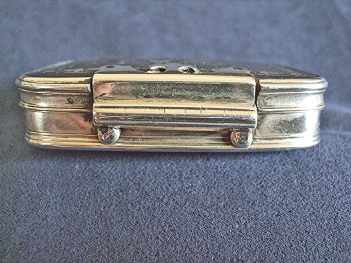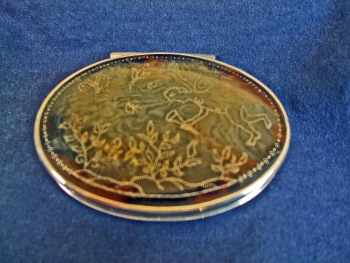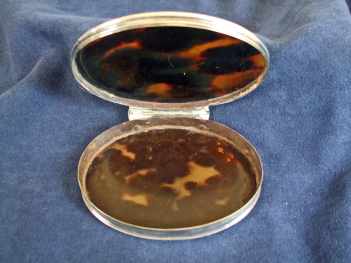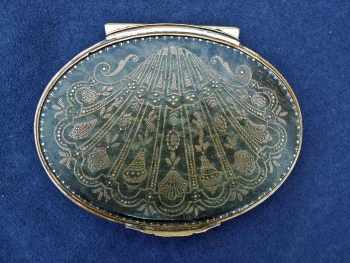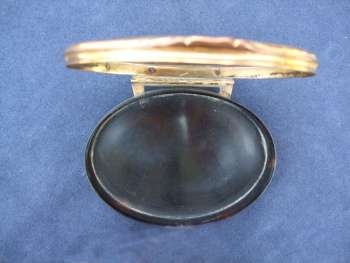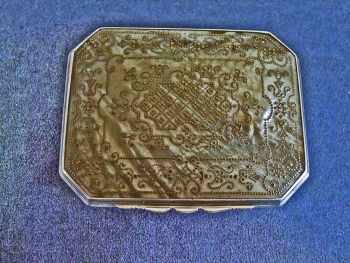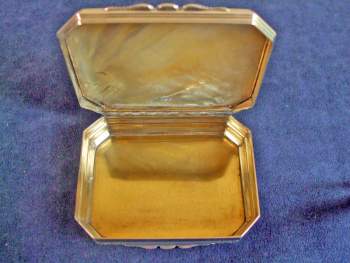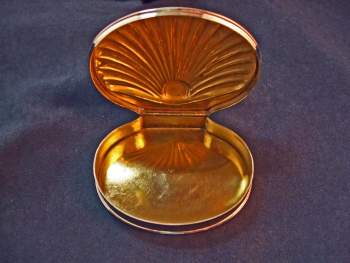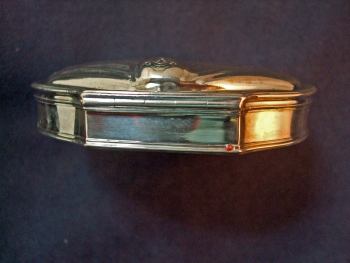by Bill
Poynton
(click on photos to enlarge image)
DATING UNMARKED LATE 17th/EARLY 18th CENTURY ENGLISH
SNUFF BOXES
What is a snuff box?
Let's call it a small, usually ornamented, box for holding snuff
(a scented, powdered tobacco). The practice of sniffing or
inhaling a pinch of snuff was common in England around the 17th
century and in the early 18th century. It became widespread in
other countries, when the demand for decorated snuffboxes, which
were considered valuable gifts, increased. Some were small
enough to fit in a waistcoat pocket, and others were larger. All
gave 17th and 18th century craftsmen an opportunity to execute
rich and elaborate designs.
Snuffboxes reflected the art and craft of the painter of
miniatures, the enameller, the jeweller, the goldsmith and
silversmith. Lids were often decorated with Chinoiserie
(note 1) or other
typical 18th-century, subject matter, such as allegories and
flowers. Whilst more expensive items were made of Gold and
Silver, less expensive items were made of horn, tortoiseshell,
mother-of-pearl or wood.
I am particularly interested in snuff boxes where the design
identifies a manufacture in this period. Very few of them
carried hallmarks, and then it would probably have been a
makerís mark only. So how do we go about dating them? The lack
of full hallmarking may well suggest that, rather than being
made in an established silversmith's workshop in a large town or
city, these might have been made by Provincial or itinerant
silversmiths for the local gentry. However, letís start with a
description.....these pieces were usually silver-mounted with
bases and lids made of tortoiseshell, mother-of-pearl or,
perhaps horn. Most of the box lids were decorated with silver or
gold pique work (note 2)
which occasionally extended to the side and base.
They were mainly oval in shape, sometimes rectangular,
occasionally round, but the one thing they seemed to have in
common in the late 17th century, say from 1680, was a "stand-away"
hinge. By this, I mean a hinge by which the lid was secured to
the body with studs, rivets or screws (see the photos below) but
where the barrel of the hinge stands away from the body of the
box. The "stand-away" hinge appears to have evolved over a
period of around 20-30 years into one where the hinge becomes an
integral part of the body of the box, being soldered to the
side.
To summarise, it would appear that dating these boxes might seem
haphazard, but it really comes down to a question of the design,
the pattern of decoration and recognition of the style of hinge.
c. 1680
c. 1690
c. 1700
c. 1710
c. 1720
|
|

